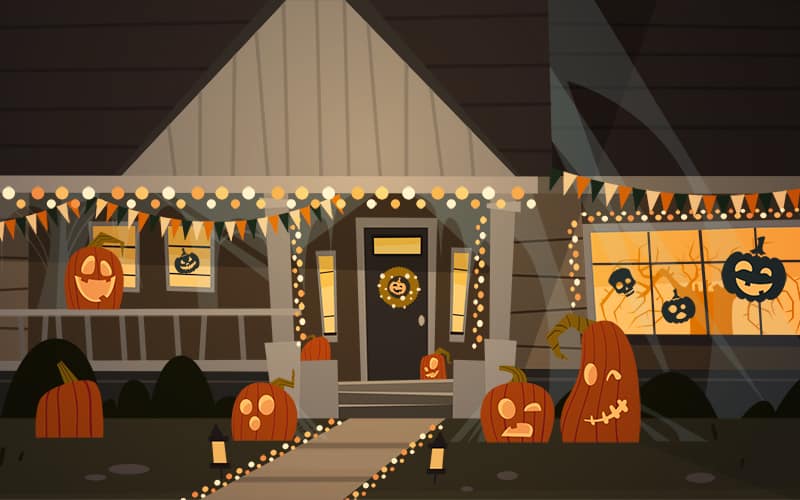5. Society (1989)
The physical feeling of watching a suburban horror film can be summarized as anxiously anticipating messed up shit going down. In Brian Yuzna’s Society, we don’t actually have to wait too long for that to happen: he gives us a glimpse in the opening credits. As a reworked version of the Eton Boating song plays, we see a writhing mass of flesh entwining and overlapping in a blur of slow motion. We can’t completely discern what it is, but like steam on glass, our imagination fills in the gaps we can’t can’t make out. Perhaps if Society had continued this artful approach to cinematography throughout the rest of the film, it would have been immediately received as the bizarre satire that it is. But even without an overt cinematic look, the visual unease of the opening credits is revisited, especially as we watch the shapes of bodies emerge from the Mega-Shunt in the film’s batshit finale.
The interesting metaphor that Yuzna plays with in Society is that the suburban horror movie monsters aren’t some invaders from Mars or demons from hell, but something that is as old as the Earth, that has existed as long as humans have. Suburbs were never about community, but homogeny, and in the game of life: these Stretch Armstrongs beat us to the top. (Jacob Trussell)
4. Fright Night (1988)
Nothing interesting ever happens in the suburbs. After all that is their great, swaddling promise: that these are clean-cut, safe, predictable, and gated neighborhoods, cordoned off from the “uncomfortable” corners of the outside world. Horror films are all too happy to expose the shaky nature of this supposed paradise… lest we forget that all manner of monsters live among us. When teenage genre film fanatic Charley Brewster (William Ragsdale) discovers that his suave new neighbor Jerry (Chris Sarandon) is a vampire, nobody believes him. Even if vampires did exist, what would they be doing in a quiet, well-to-do neighborhood like this? But Charley knows better: predators come in all shapes, sizes, and enviable knitwear. And while Charley ventures off to find an ally in his T.V. hero (Roddy McDowall), Jerry sets his sights on Charley’s girlfriend Amy (Amanda Bearse) who bears a striking resemblance to an old flame. There goes the neighborhood. (Meg Shields)
3. A Nightmare on Elm Street (1984)
Sometimes, that sleepy suburban town really needs to wake up. No, really, there’s a man wearing bladed gloves and a striped sweater terrorizing the dreams of local teenagers. On Elm Street, Freddy Krueger was born, the kid murderer who jumps between nightmares and kills you when you’re most vulnerable. This is no Michael Myers or Jason Voorhees; this is a villain who flits through your subconscious and doesn’t just lurk behind trees and bushes. Krueger is a sweet-talking killer who terrorizes final girl Nancy (Heather Langenkamp) and her friends in order to get revenge against their parents who murdered him years and years ago. The idyllic facade of Springwood, Ohio is torn to shreds as not only kids are killed, but the murderous rampage of the older generation is exposed in this slice of suburban horror. A Nightmare On Elm Street is a quintessential slasher flick that illustrates the systematic destruction of the constructed idea of peace around the suburbs. (Mary Beth McAndrews)
2. Poltergeist (1982)
A misconception in Poltergeist is that the central haunted house was built on top of an Indian Burial Ground, and that’s where the film’s supernatural antagonist is derived from. However, that’s not what happens in the film. The real estate developer Mr. Teague (James Karen) plainly spells this out to Steve Freeling (Craig T. Nelson) as they survey the vast landscape of the Cuesta Verde subdivision. After telling him his house is built over an old cemetery, Teague tells Steve plainly, “It’s not ancient tribal burial ground. It’s just… people.” But as we see in the film, it’s way more than people haunting the Freeling’s home.
Before the sequels retrofitted a physical antagonist for the Freeling family to fight against, the well that springs the suburban evil in the original film is capitalist greed. Emboldened by the Reagan Revolution, Teague covertly cut corners, believing there would be no consequences for his actions except that his wealth would increase. Released in 1982 just as the Reagan Administration was becoming a deregulation machine, the scariest lingering question in Poltergeist is how many other bodies, and how many other communities, are buried in the foundation of the suburban experience? (Jacob Trussell)
1. Halloween (1979)
The idea behind “suburban horror” is that suburbs represent safety and mundane living, and injecting that normalcy with terror is itself unsettling. We’re used to creepy places being old houses, cabins in the woods, or remote locales far from witnesses, so bringing that horror home delivers an added level of fright. John Carpenter, Debra Hill, and friends understood that — hell, the tagline behind Halloween is “the night He came home” for a reason — and they succeeded far better with the concept than most (all?) of their peers.
Today’s world is a bit different, but back in the 70s and 80s most of us not only knew our neighbors by name but were maybe even friends. Bad things happened elsewhere, and our cul-de-sacs, circles, and neighborhoods were safe from the boogeyman. Now, of course, we know that’s a lot of horseshit, and Carpenter captures the truth well as his masked killer goes house to house like a deranged Jehovah’s Witness (redundant, I know) leaving corpses in his wake. You can yell for help, but even if your neighbor hears they might just turn out the porch light and pretend otherwise. In the suburbs, no one will admit they heard you scream. (Rob Hunter)
Previous 2 of 2

